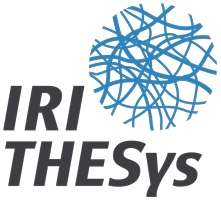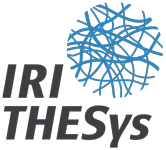PhD Project
This dissertation quantifies anthropogenic material stocks and population distribution and dynamics from Earth Observation data as a contribution to socio-economic metabolism research.
The socio-economic metabolism describes the input and output of the entirety of resources used to sustain a society and has become a key element of sustainable transformation research. Whereas many studies in socio-economic metabolism research study material and energy flows, the ERC-funded project MAT_STOCKS will focus on the long-term accumulation, distribution and depletion of material stocks. About half of all recent material flows could be allocated to stock accumulation, mainly in buildings and infrastructure.
This project builds on Earth Observation’s history of mapping anthropogenic land cover and land use. The study area is Germany. In a first step, dense satellite data time series is used to map physical characteristics of settlements – building presence, building height, the type of buildings and infrastructures. Chapter Two translates this information to high-resolution maps of population and to material stocks, the latter using material intensity factors that indicate the material density in tons per square or cubic meters of specific infrastructure or building features. In a third step, the project adds a historic dimension by using satellite data from 1984 onwards to estimate pathways of building and infrastructure developments in the study region.
This research receives funding from the European Research Council (ERC) under the European Union’s Horizon 2020 research and innovation programme (MAT_STOCKS, grant agreement No 741950).
Output
Schug, F.; Frantz, D.; van der Linden, S.; Hostert, P. (2021): Gridded population mapping for Germany based on building density, height and type from Earth Observation data using census disaggregation and bottom-up estimates. PLOS ONE, 16(3). doi: 10.1371/journal.pone.0249044
Haberl, H.; Wiedenhofer, D.; Schug, F.; Frantz, D.; Virág, D.; Plutzar, C.; Gruhler, K.; Lederer, J.; Schiller, G.; Fishman, T.; Lanau ,M.; Gattringer, A.; Kemper, T.; Liu, G.; Tanikawa, H.; van der Linden, S.; Hostert, P. (2021): High-Resolution Maps of Material Stocks in Buildings and Infrastructures in Austria and Germany. Environmental Science & Technology, doi: 10.1021/acs.est.0c05642
Frantz, D.; Schug, F.; Okujeni, A.; Navacchi, C.; Wagner, W.; van der Linden, S.; Hostert, P. (2021): National-scale mapping of building height using Sentinel-1 and Sentinel-2 time series. Remote Sensing of Environment, vol. 252. doi: 10.1016/j.rse.2020.112128
Schug, F.; Frantz, D.; Okujeni, A.; van der Linden, S.; Hostert, P. (2020): Mapping urban-rural gradients of settlements and vegetation at national scale using Sentinel-2 spectral-temporal metrics and regression-based unmixing with synthetic training data. Remote Sensing of Environment, vol. 246. doi: 10.1016/j.rse.2020.111810
Schug, F.; Okujeni, A.; Hauer, J.; Hostert, P.; Nielsen, J. Ø.; van der Linden, S. (2018): Mapping patterns of urban development in Ouagadougou, Burkina Faso, using machine learning regression modeling with bi-seasonal Lnadsat time series. Remote Sensing of Environment, vol. 210, 218-227. doi: 10.1016/j.rse.2018.03.022



